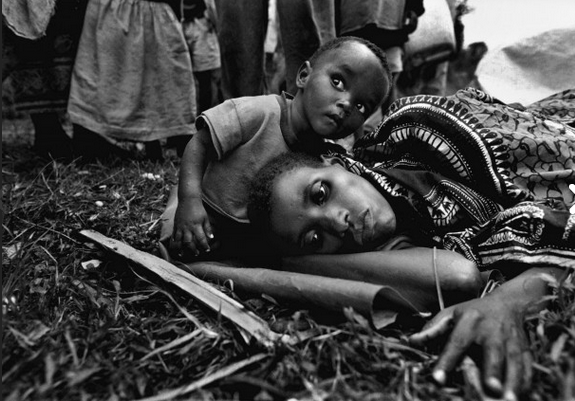1st March 1997, the Tingi-Tingi refugee camp was stormed by Paul Kagame’s army (RPA) and slaughtered its last occupants including children, women, and sick people who could not flee.
According to the DRC Mapping Exercise Report by UN’s High Commissioner for Human Rights, “on the morning of 1 March 1997, elements of the Rwandan Patriotic Army (RPA) and of the Alliance of Democratic Forces for the Liberation of Congo (AFDL) entered the Tingi-Tingi refugee camp and indiscriminately killed the remaining Hutu Rwandan and Burundian refugees. Although most of the refugees had already left the camp, several hundreds of them were still there, including many sick people who were being treated in the dispensary and unaccompanied children. RPA troops killed most of the victims with knives. The bodies were then buried in several mass graves by volunteers from the Lubutu Red Cross.”

The report also states that “in the afternoon of 1 March 1997, RPA elements opened fire on thousands of Hutu refugees who were in the tail of the fugitive column towards Lubutu and killed several dozens. On the same day, RPA soldiers shot dead several hundreds of refugees waiting to cross the bridge over the Lubilinga River. Many refugees drowned when they jumped into the river. Others were dead when they were crushed underfoot by the crowd in the ensuing panic”.
“Dr. Camille Kabakira, 31, a Hutu physician who survived, speaking to a reporter in March at the Ubundu camp, also described a terrifying scene at the town of Lubutu, where, the next morning, rebel units launched a mortar attack on the fleeing refugees, who were trying to cross a bridge leading to the west. The sound of the machine-gun fire on the eastern bank meant certain death for Hutu stragglers, he said.”
“Tens of thousands of Hutu refugees pushed westward for nine days, losing people to disease as they went until they came to Ubundu, a sawmill town on the Congo River, where they camped on the eastern bank. By March 12, many seemed to have been broken by their days of terror. “
James C. McKinley Jr., Howard W. French, The New York Times, 1997, Hidden Horrors: A special report.; Uncovering the Guilty Footprints Along Zaire’s Long Trail of Death
The next day, March 2nd, RPA soldiers ordered the people of Lubutu to bury the victims, but most of the bodies were thrown into the river.
(Reyntjens, F., 2009. The Great African War: Congo and Regional Geopolitics, 1996–2006. New York: Cambridge University Press)
Amnesty International, 1997, DRC: Deadly alliances in Congolese forests, AI Index: AFR 62/33/97, p11
